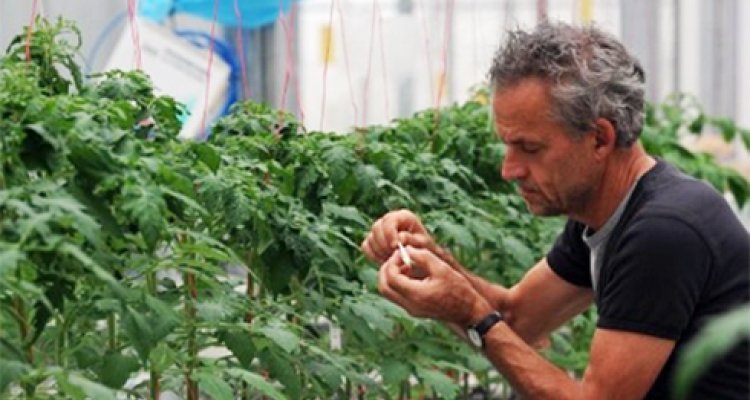
Project
On-site detection of plant pathogens
The early identification of plant pathogens is important in order to take swift measures. This can prevent the further spread of disease as well as preventing delay and restrictions of the importation and exportation of plant materials. Quick intervention will result in cost savings and a reduction in loss of revenue. Therefore, this project is developing directly applicable, fast and precise methods for the identification of pathogens.
The spreading of pathogens has become an ever-growing issue of concern for the Dutch horticultural sector as a result of climate change and the increase in the large-scale global transport of plant products. As soon as the symptoms of a pathogen have become visible, visual assessment can be a quick and easy diagnostic method. Unfortunately, symptoms are not always visible or obvious and can vary extensively depending on the circumstances. The correct and quick diagnosis of suspect plant material at the production location is necessary to guarantee the production of healthy vegetative plant material and seeds. This applies to production location in the Netherlands as well as elsewhere. The identification methods that are to be developed could also be employed for import inspections at the border.
Objective(s)
The development, validation and implementation of quick, precise and sensitive tests for the on-site detection of bacteria, virus and fungi-related diseases that can be directly applied in business processes or the production chain in order to improve plant health and phytosanitary controls.
Methodology
Knowledge institutes share their knowledge and experience of the latest research developments and will work closely with businesses. This collaboration should result in a breakthrough in the development of suitable and practically usable on-site methods for detection as well as the identification of plant pathogens.
This Public Private Partnership project (PPP) has been divided into three central themes:
- Innovation
- Development
- Valorisation
The development of these diagnostics is a costly and risky activity that businesses often cannot complete by themselves. Yet, it is a decisive factor for business processes or in the production chain.
Results
2015:
Multiplex test for the detection of Clavibacter michiganensis subsp. michiganensis (1) and Acidovorax citrulli (2) in tomatoes and Cucurbitaceae.
2016:
- Multiplex test for the detection of Pseudomonas syringae (3) and (generic) Pospiviroid (4) in squashes, tomatoes, sweet peppers and a variety of ornamental plants.
- Simplex test for Helicoverpa armigera (cotton bollworm).
- Simplex test for Botrytis allii in onions.
- Simplex test for Acidovorax cattleyae in water.
2017:
- Multiplex test for (generic) Tobamovirus (5) and Pepino mosaic virus (PepMV) (6) in tomatoes and sweet peppers.
- Simplex test for Thaumatotibia leucotreta (False Codling Moth)
- Simplex test for Botrytis aclada in onions.
- Simplex test for Acidovorax cattleyae in air samples.
2018:
- Multiplex tests for the detection of targets (1-2), (3-4) and (5-6) in seeds.
- Quantitative simplex test for Acidovorax cattleyae in air samples which can - if possible - differentiate between living and dead cells.
- Simplex test for the detection of Xanthomonas hortorum pv Pelargonii (Xhp) in the leaves of pelargonium.
- Simplex test for the detection of Ophiostoma ulmi sensu lato in the wood of elm.
- Access to software for the development of LAMP primers. A validated LAMP primer design pipeline and protocol for the efficient use of sequence data.
- Scientifically-based selection of sample treatment procedures for a variety of matrices including leaves, fruits, seeds, water and air that are suitable for use in routine applications. The selection procedure that is developed will be presented as a flow chart. The consortium will combine the optimised sample treatment procedures with LAMP for various routine applications.
- Validated protocols for the development of:
- LAMP test for the detection of living and dead pathogen cells
- Multiplex LAMP test.
- Quantitative LAMP test - Validation of tests in accordance with ISO 17025 (quarantine organisms).
- Reporting on the results of the research.
- Two scientific publications directly related to the proposed research.
Further information
Would you like to find out more about what on-site detection could mean for you? Then contact us!